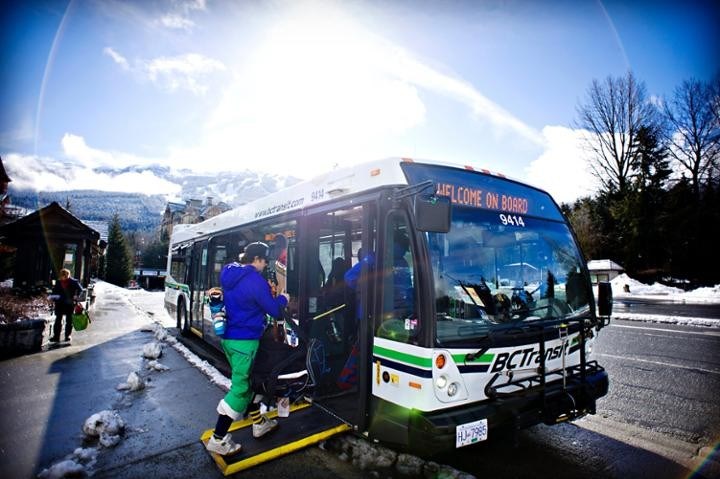A number of best-in-class technologies are slated for installation next year on Whistler’s bus fleet that are expected to improve the transit experience and give officials real-time data for more effective transportation planning.
First announced last year when the Resort Municipality of Whistler (RMOW) and the District of Squamish signed a Memorandum of Understanding with BC Transit, the new real-time information system will include GPS tracking, automatic passenger counting and closed-circuit TV on all Whistler buses.
“This is something that we’ve been interested in for quite some time,” said Mayor Nancy Wilhelm-Morden. “This will improve service by having customers be able to track where the buses are, and the closed-circuit TV will help with ensuring the safety of both passengers and drivers. I’m very happy to see this.”
The ability to track buses’ exact locations should help to increase ridership, said BC Transit’s Jonathon Dyck.
“The schedule is more reliable with real-time information,” he said. “The other thing we found when we were doing our research is it typically attracts additional ridership as a result as well.”
It should also help streamline BC Transit’s operational plan.
“We’ll be able to manage on-road operations more effectively using this real-time technology," Dyck said.
With nearly 60 per cent of Whistler’s overall greenhouse gas emissions coming from passenger vehicles, the upgrades to the Whistler Transit fleet are aligned with the RMOW’s goal of reducing emissions by a third by 2020.
“You think about the existing capacity we have, the reality is we have a two-lane highway in Whistler and if we can get people from single- or double-occupancy vehicles onto transit, then it reduces emissions and allows us to safeguard the capacity we do have,” noted Sea to Sky MLA Jordan Sturdy.
The automatic passenger counters mean Whistler Transit will have a better handle on how riders are using the service. It will also count passengers on the free village shuttles for the first time.
“We do know just from anecdotal evidence and from the wear and tear on the buses that the free-to-users village shuttles get a huge amount of use in the winter, and increasingly in the summer as well, so if we get the exact numbers it’s good for transit planning to know when most of our customers get onboard, for example,” Wilhelm-Morden said. “But we’ll also be able to really track the user-to-cost ratio. Right now we’re just kind of guessing what that is, so that will help us plan on a broader scale.”
The installation of these technologies is part of the nearly $160 million in federal and provincial funding announced last year for BC Transit projects across the province. Out of that, Dyck said roughly $11.7 million would go towards installing the “smart bus” program in Whistler as well as Squamish, Kamloops, Nanaimo, Comox Valley, Kelowna, and Victoria. As part of its agreement with BC Transit, the RMOW will cover a portion of the installation costs.
BC Transit is releasing a request for proposals to find a vendor to install and maintain the real-time technology this month, with an anticipated installation date in 2018, Dyck said. The CCTV will be installed on local buses early this year.




